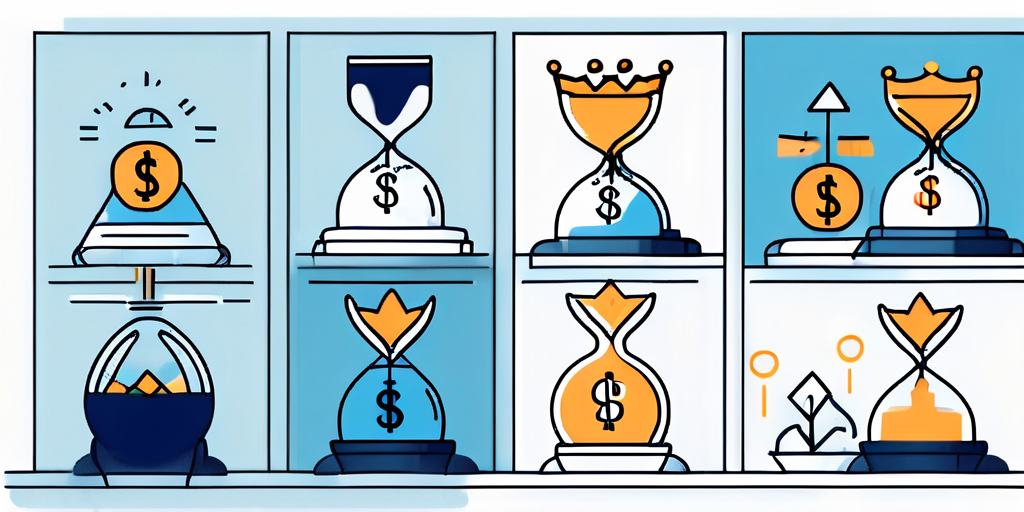In the realm of digital marketing, understanding the concept of BANT (Budget, Authority, Need, Timeline) is crucial for businesses looking to qualify leads effectively. This glossary entry will delve into the intricacies of BANT, providing a comprehensive understanding of its components and how they apply to website leads.
As a method used by sales teams to qualify leads, BANT is an acronym that stands for Budget, Authority, Need, and Timeline. Each of these elements represents a specific criterion that potential customers must meet to be considered a viable lead. This method allows businesses to focus their efforts on the most promising leads, maximizing efficiency and return on investment.
Understanding BANT
Before diving into the specifics of each component, it’s important to grasp the overarching concept of BANT. This method is a tool for qualifying leads, a crucial step in the sales process. By determining whether a potential customer meets the criteria of Budget, Authority, Need, and Timeline, businesses can ensure they’re investing their resources wisely.

Qualifying leads is not a one-size-fits-all process. Different businesses may have different criteria, and the importance of each BANT component can vary depending on the product or service being sold. However, BANT provides a solid foundation upon which businesses can build their lead qualification strategy.
The Importance of BANT
Why is BANT so important in the realm of lead qualification? The answer lies in its ability to streamline the sales process. By focusing on leads that meet the BANT criteria, businesses can ensure they’re not wasting time and resources on leads that are unlikely to convert.
Furthermore, BANT can help businesses better understand their target audience. By examining the Budget, Authority, Need, and Timeline of potential customers, businesses can gain valuable insights into their customers’ buying behavior, which can inform future marketing and sales strategies.
Breaking Down BANT
Now that we’ve covered the basics of BANT, let’s delve into each component in more detail. Understanding the nuances of Budget, Authority, Need, and Timeline is crucial for effectively applying this method to your lead qualification process.

Each component of BANT serves a specific purpose in the lead qualification process. By examining each one in detail, businesses can gain a comprehensive understanding of their potential customers and make informed decisions about where to invest their resources.
Budget
The first component of BANT, Budget, refers to a potential customer’s financial capacity to purchase a product or service. This is arguably one of the most straightforward components of BANT, as it simply involves determining whether a lead has the necessary funds to make a purchase.
However, understanding a lead’s budget involves more than just asking about their available funds. Businesses must also consider the value of their product or service and whether it aligns with the lead’s perceived value. If a lead doesn’t see the value in a product or service, they’re unlikely to be willing to allocate their budget towards it.
Authority
The second component of BANT, Authority, involves determining whether a lead has the power to make purchasing decisions. This is particularly important in B2B sales, where purchasing decisions often involve multiple stakeholders.
Understanding a lead’s authority can involve a variety of factors, including their role within their organization and their influence over purchasing decisions. If a lead doesn’t have the necessary authority, they may not be a viable lead, regardless of their budget, need, or timeline.
Need
The third component of BANT, Need, refers to a lead’s requirement for a product or service. This involves understanding the lead’s pain points and how your product or service can address them.
Identifying a lead’s need can involve a variety of techniques, including conducting customer interviews and surveys. By understanding a lead’s need, businesses can tailor their sales and marketing strategies to address these needs, increasing the likelihood of conversion.
Timeline
The final component of BANT, Timeline, involves understanding when a lead plans to make a purchase. This can help businesses prioritize their leads and focus their efforts on those that are ready to buy in the near future.
Understanding a lead’s timeline can involve a variety of factors, including their purchasing cycle and any external factors that may influence their decision to buy. By understanding a lead’s timeline, businesses can ensure they’re focusing their efforts on the most promising leads.
Applying BANT to Website Leads
Now that we’ve broken down each component of BANT, let’s explore how this method can be applied to website leads. Website leads, or potential customers who have expressed interest in a product or service through a website, present a unique set of challenges and opportunities when it comes to lead qualification.

Applying BANT to website leads involves a combination of data analysis and customer interaction. By examining website analytics and engaging with leads through various channels, businesses can gain a comprehensive understanding of their potential customers and effectively qualify their leads.
Using Analytics to Understand Budget and Need
Website analytics can provide valuable insights into a lead’s budget and need. By examining a lead’s behavior on a website, businesses can gain a sense of their financial capacity and their requirement for a product or service.
For example, a lead who frequently visits a website’s pricing page may have a higher budget, while a lead who spends a lot of time on a product page may have a strong need for that product. By understanding these behaviors, businesses can effectively apply the BANT method to their website leads.
Engaging with Leads to Understand Authority and Timeline
While website analytics can provide valuable insights, engaging with leads directly is crucial for understanding their authority and timeline. This can involve a variety of methods, including email marketing, social media engagement, and direct communication.
By engaging with leads, businesses can gain a better understanding of their purchasing power and their plans to buy. This can help businesses prioritize their leads and focus their efforts on those that are most likely to convert.
Conclusion
In conclusion, BANT is a powerful tool for qualifying leads, allowing businesses to focus their efforts on the most promising potential customers. By understanding and applying each component of BANT, businesses can streamline their sales process and maximize their return on investment.
While BANT is a valuable tool, it’s important to remember that lead qualification is not a one-size-fits-all process. Businesses should use BANT as a foundation upon which to build their own unique lead qualification strategy, tailored to their specific product or service and target audience.
Frequently Asked Questions
What does BANT stand for?
BANT is an acronym used in sales and marketing to qualify leads. It stands for:
- Budget: Determines if the potential customer has the budget to purchase the product or service.
- Authority: Identifies if the contact person has the decision-making power or needs to refer to someone else.
- Need: Assesses whether the potential customer has a need that the product or service can fulfill.
- Timeline: Establishes when the potential customer plans to make a purchase decision.
Why is the BANT framework important?
The BANT framework is important because it provides a straightforward method for sales teams to qualify leads. By evaluating prospects according to these four criteria, businesses can prioritize their efforts on leads that are most likely to convert into customers, thereby increasing sales efficiency and effectiveness. It helps in focusing resources on high-quality leads, improving the chances of meeting sales targets.
How do you apply the BANT framework in lead qualification?
To apply the BANT framework in lead qualification, sales representatives should:
- Ask Direct Questions: Formulate questions that directly or indirectly help you assess each BANT component during interactions with leads.
- Use Marketing Automation: Implement lead capture forms and nurturing campaigns that gather BANT-related information before the lead reaches the sales team.
- Score Leads: Assign scores based on how well leads meet each BANT criterion, prioritizing those that score highest for direct sales engagement.
- Continuous Evaluation: Reassess lead qualifications over time as circumstances and lead information evolve, ensuring sales efforts remain focused on viable prospects.
What are the challenges of using the BANT framework?
While BANT is a valuable tool, it faces challenges such as:
- Changing Buying Processes: Modern buying processes often involve more stakeholders and longer decision cycles, complicating the assessment of Authority and Timeline.
- Access to Information: Prospects may be hesitant to disclose budget or authority information early in the sales process, making it hard to qualify leads based on these criteria.
- Flexibility: Strict adherence to BANT can lead to missed opportunities with leads that may not initially meet all criteria but are still valuable prospects.
- Adaptation to Different Sales Models: BANT may need adjustments to fit the nuances of subscription models, services, or lower-cost solutions where budget is less of a concern.
How has the BANT framework evolved over time?
The BANT framework has evolved to accommodate changes in buying behaviors and sales methodologies. Adaptations include:
- Flexibility in Criteria: Recognizing that not all leads will meet all four criteria perfectly and adjusting sales approaches accordingly.
- Incorporating Additional Factors: Beyond BANT, factors like engagement level, content interaction, and fit with the company’s ideal customer profile are increasingly considered.
- Integration with Inbound Marketing: Using BANT criteria to inform content creation and lead nurturing efforts, engaging prospects at various stages of their decision-making process.
- Leveraging Technology: Utilizing CRM and marketing automation tools to collect, analyze, and act on BANT-related information throughout the customer journey.